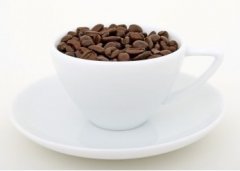A simple method for the use of French pressure pot introduction to the method of making coffee
The coffee produced by the French pressure pot can well retain the different flavor of different coffee beans, and the single product can make people drink the taste very intuitively. The method of using the pressure kettle is very simple, but what is not mastered is bitter water. French pressure pot coffee three variables. One: powder thickness, two: water temperature, three: time.
1. The requirement of grinding by powder thickness method is not too high, but the requirement of powder thickness is high. Fine powder: good, the contact area with water will be extracted thoroughly, and the taste will be stronger. Disadvantages, by the pressure pot filter structure, some fine powder will not be filtered by the filter will affect the taste of coffee. Fine powder can easily lead to excessive extraction and turn coffee into a cup of bitter water. Coarse powder: the advantage is that the area in contact with water can extract special flavor and reduce the bitterness of roasting to cover up the flavor of coffee. Because the particle big pressure pot filter screen can clean filter and reduce the sense of particles. The disadvantage is that the contact area between large particles and water is less clear and tasteless.
2, water temperature: high temperature, fast extraction speed, thorough extraction. The coffee is full-bodied and bitter. The extraction is slow at low temperature, and the flavor is released when the extraction area is small. The coffee tastes clear and sour. The optimum temperature of 85-95 is adjusted by personal taste.
3, time: from the process of pressing the pot of coffee, we can see that there are three places where time needs to be controlled.
First, stir, the coffee powder floats after the water rushes into the pressure pot. At this time, it is necessary to stir so that the water is in full contact with the powder. I think it will take 4 seconds, and the excessive stirring flavor will give off.
Second, steaming, after the lid of the kettle is closed, this depends on the comprehensive factors, the water temperature of the powder thickness and personal preference. Fine powder, it only takes 35-45 seconds. The powder is fine and the water temperature is low for 1 minute. Thick powder, the machine should be longer, 1 minute. Coarse powder, low water temperature for about 2 minutes.
Third, the last is to press down the handle of the kettle for about 10 seconds and press down vertically at a uniform speed.

Important Notice :
前街咖啡 FrontStreet Coffee has moved to new addredd:
FrontStreet Coffee Address: 315,Donghua East Road,GuangZhou
Tel:020 38364473
- Prev

The difference between Arabica and Robusta Coffee Basics
Arabica Coffee Beans Coffea arabica is known as Arabica coffee 70% of the worlds coffee production is from Arabica beans. Arabica coffee is grown in Central and North America, The Carribean, South America, Eastern Africa, Yemen, Papua New
- Next

There are two varieties of coffee: Arabica and Robusta.
At present, the main varieties of coffee grown in the world come from two original varieties: Arabica and Robusta. The planting methods, growth environment and other conditional characteristics of the two are different, and even the caffeine content is quite different. Arabica Robusta is mainly found in tropical Central and South America, Madagascar in west-central and eastern Africa, and Indonesian species in Asia.
Related
- Beginners will see the "Coffee pull flower" guide!
- What is the difference between ice blog purified milk and ordinary milk coffee?
- Why is the Philippines the largest producer of crops in Liberia?
- For coffee extraction, should the fine powder be retained?
- How does extracted espresso fill pressed powder? How much strength does it take to press the powder?
- How to make jasmine cold extract coffee? Is the jasmine + latte good?
- Will this little toy really make the coffee taste better? How does Lily Drip affect coffee extraction?
- Will the action of slapping the filter cup also affect coffee extraction?
- What's the difference between powder-to-water ratio and powder-to-liquid ratio?
- What is the Ethiopian local species? What does it have to do with Heirloom native species?

